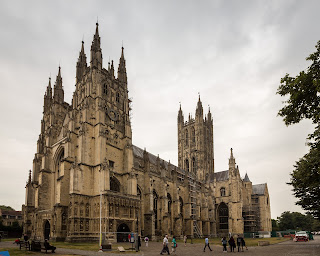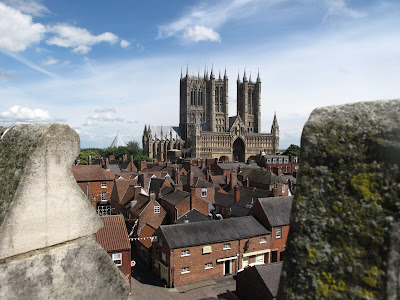A place of refuge and a controversial Cleric
As we reach Durham, (our last stop south of the border), our Director of Music, Derek Clark, reflects on his alma mater.
Situated high on an outcrop above the River Wear, Durham Cathedral has become a well-known landmark on railway journeys down the East Coast of Britain. Built originally to be a fitting resting place for the relics of St. Cuthbert, which were brought from Lindisfarne in 995AD, with its unmistakable twin towers flanking a higher central tower originally designed to support a spire as well, it remains one of the finest examples of Norman architecture in Britain. Building of the present structure dates from 1093 when work on the Choir area was begun by Bishop William of St. Carileph.
Though most of this original Choir area was replaced in the 13th century, the roof of the south aisle of the Choir provides one of the earliest examples of ribbed vaulting in the country. But work on the cathedral was slow to gain momentum, and it was 1104 before the interment of St. Cuthbert's relics in the fabric of the building was able to take place. The Cathedral also contains the memorial tomb of the Venerable Bede, who in 731AD had compiled his 'History of the English Church and People', one of the earliest of its kind. The interior of the building is notable for the carved pillars, and the differences between the original Norman arches, which are rounded, and the later Gothic ones, (mainly in the roof) which are pointed, can easily be seen.On the north door is the famous Sanctuary Knocker. In the middle ages, anyone who 'had committed a grave offence' could rap on this knocker and receive sanctuary on the cathedral precincts for 37 days, during which time they had to reconcile themselves to facing up to their crime. They were given a special black cloak with a Cross of St. Cuthbert sewn into the left shoulder to show that they were under the Cathedral's protection.
The Bishop of Bernicia, founded originally in 635, was transferred to Durham in 995 at the same time as St. Cuthbert's bones were brought to the city. Up until the mid-18th century, the Bishops of Durham wielded great power, not just in the surrounding area (one of them, Bishop van Mildert, founded the town's university), and Durham Castle (situated across the Palace Green from the cathedral) was their palace until it was donated, with other buildings on the Green, to the University in 1836. Today, the See of Durham, together with London and Winchester, ranks third in importance in the country after Canterbury and York. In 1984, the appointment of the radical theologian, David Jenkins, to this venerable position caused considerable controversy after he appeared to deny the veracity of the Virgin Birth and described the Resurrection as a 'conjuring trick with bones'. But during his tenure, the whole site, including the cathedral, the castle and the buildings on the Green became a UNESCO World Heritage Site. The importance of the bishopric can also be seen in the fact that several former Bishops of Durham have gone on to become Archbishop of Canterbury, including the present Justin Welby.
Because of its iconic features, the building has often been used as a setting for TV programmes and films. Like Gloucester Cathedral, it featured in the Harry Potter films, where the twin towers at the West end of the cathedral may be seen as part of the exterior of Hogwart's School, and the Chapter House was used as Professor McGonigall's classroom.
One of the buildings on Palace Green has for many years been the site of the University Music Department, and it was there that I went to sit exams for my BMus degree. I remember that each exam was 3 hours long, but for those in the afternoon, we were given an extra 15 minutes, since the cathedral (literally next door) rang its bells for 15 minutes before Evensong at 4pm, and it was felt unfair to ask students to concentrate on harmony, counterpoint or fugue exercises while the bells were ringing! (If you timed it right, though, you could work through the bells, making a fair copy of something you had worked out earlier, and still have the extra 15 minutes at the end as a bonus).








Comments
Post a Comment